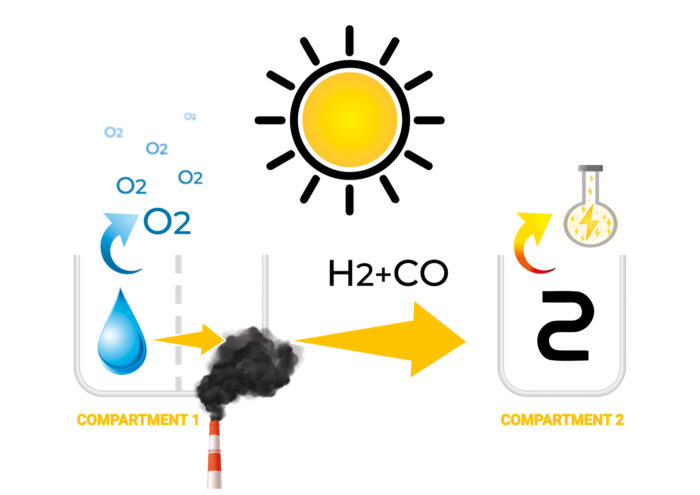Project Ambition
CONDOR targets a modular device for solar-driven production of energy carriers and added value chemicals from biomass valorisation. Reactants are simple molecules and waste chemicals such as water and carbon dioxide or biomass derived alcohols. The only energy source to drive the process is sunlight. This is the most convenient way to store an intrinsically intermittent primary energy source (sunlight) into high energy density products that can be used whenever needed(fuels). The latter are termed solar fuels.

This overall objective is accomplished through three Scientific and Technological Objectives:
CONDOR is an ambitious project in terms of research and engineering activities, as well as assessment of environmental impact and roadmap to commercialisation. The expertise of the consortium will enable CONDOR to target a technology readiness level (TRL) of 4 for integrated fuel production with high efficiency, opening the route to the industrial production of fuels within a decade after the end of the project, according to a specific roadmap. In addition, an analysis of energy consumption to produce the required materials and to run the overall process will be carried out to select the best solution not only in terms of costs, but also of energy resources and environmental impact.
Project impact
CONDOR has the ambition to become a basis for the next generation of non-fossil fuel production technologies as it proposes an innovative approach that brings both techno-economic and environmental advantages in comparison to current solutions for renewable production of methanol and dimethylether. More specifically, the expected impact of the CONDOR project is to:
- Contribute to accelerating and reducing the cost of the next generation of sustainable renewable energy generation. CONDOR system will save 300 tons CO2/ha per year and it will produce 160 tons DME/ha per year from renewable sources. CONDOR modularity, flexibility, size and cost-efficiency will make the system adaptable and replicable in industrial processes. The CONDOR system will be highly profitable and convenient in a long-term perspective.
- Advance the knowledge and scientific proofs of the technological feasibility of its concept including the environmental, social and economic benefits. CONDOR aims at increasing knowledge of the scientific community in terms of nanostructured materials, photocatalysts, operando microscopy/spectroscopy and PEC engineering to develop a new generation of renewable energy systems. The environmental, social and economic benefits will be quantified through the Life Cycle Analysis (LCA) and specific dissemination events will promote the CONDOR system to environmental, social and economic stakeholders.
- Show contribution towards establishing a solid European innovation base and building a sustainable renewable energy system. CONDOR is a disruptive technology that will contribute to innovation-based growth within the European Union, in line with the European Green Deal. The aim of CONDOR is also to provide recommendations and guidelines to the European Commission for future updates of the policy framework of the new generation of renewable energy systems. In this perspective, CONDOR will contribute to the CO2 Value Europe association and it will benefit and enlarge the knowledge of the SUNRISE project and roadmap.